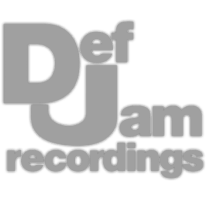Professional Analog Mastering.
Professional Analog Mastering.










If you’re mixing low frequencies, the best thing you can do is find ways to separate instruments that are heavily overlapping. If you separate them via distortion, equalization, transient shaping, or other means, your low end has a better chance of sounding clearer and more impactful.
Distorting your lows can be really helpful, especially when you have multiple instruments fighting for space in a narrow frequency range. If we distort the kick, we’ll be able to hear both the kick and bass instruments better due to how the harmonics from the distortion differentiate them.
To do this I’m going to use a compressor with a very fast attack and release and set these to the quickest settings - in turn causing unique but natural-sounding distortion.
If you’re finding your lows are sounding blurred together, use a transient shaper on your kick or bass to add some higher frequency content to that signal. I’ll use Elevate by Newfangled audio to increase the level of my kick’s transients and to separate it from other instruments.
This can be easy to overdo so use your ears and try to keep the effect at a reasonable level.
For this trick we need an EQ that can match signals - we’ll match the kick and bass signals, and then delete some of the more extreme bands. Then we will highlight all of the bands and subtly invert their gain, causing everything that matches the signals to separate them.
This trick works for other instruments in a similar frequency range, so try it out whenever needed.
If you’re mixing a track with subs or 808s, and you want to amplify or attenuate them, take a look at 20 to 60Hz, which is where these instruments will be situated. If you want to make your sub or the sine wave of your 808 louder, simply amplify them.
And of course, if it’s too loud do the opposite.
Although all kicks are a little different, here are some important frequencies and ranges to pay attention to when equalizing a kick drum. 40Hz is usually the kick’s fundamental, whereas 80Hz is typically where consumer-grade speakers will be able to support as the lowest kick frequency.
800Hz to 1300Hz is about where you’ll hear the snap of the drum skin if you’re using organic samples or original recordings. Lastly 4kHz to 6kHz and where you’ll hear the air of the kick or the tail end of the kick drum skin’s vibration.
Bass frequencies will depend on the range, key, and other factors, so let’s focus on the fundamental and its harmonics - the fundamental is going to be the strongest frequency and give you the body and warmth of your bass. The 2nd order harmonic helps the instrument translate to consumer speakers.
The 3rd adds a little clarity to bass and helps separate it from a kick. Lastly, from about 1.5 to 2.5kHz you’ll find the most percussive or transient aspects of the bass.
If you’re mixing a drum bus and it needs compression, try using an internal side-chain and cutting out the lows from triggering the compressor. This way less compression occurs and the kick is attenuated less often, causing the drums to have a warm and full tone.
You can also try some saturation and use tube or transformer settings to emphasize the low end of your drums.
Depending on your processing, bass frequencies can sometimes end up on your side image, making the mix sound less focused. This can be a good thing and used for creative effects, but if you want a driving kick and bass it’s best to keep the lowest frequencies mono.
Using a mid-side EQ, I can use a high-pass on the side image, attenuating any bass on that image and ensuring the lows stay mono.
With modulated distortion, we can ensure that the distortion primarily occurs on a kick’s or bass’s transients, in turn making the instrument cut through a mix. To do this I’ll use Saturn 2, I’ll create a band, and create an envelope follower with a short attack, decay, and release.
On the second band, I’ll heavily distort the signal and place its crossover right above the lows. Then I’ll link my envelope follower to this crossover. This way whenever the kick hits the envelope follower increases the value of the crossover, meaning the lows become distorted as well, but in a program-dependent way.